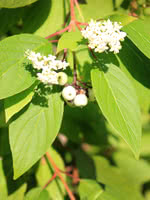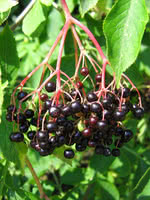Mon-Fri 9am - 5pm Mountain time
Yellow Twig Dogwood vs Black Elderberry
Cornus sericea flaviramea
Sambucus canadensis
CUSTOM GROW
NOT AVAILABLE THIS SEASON - MIGHT RETURN
Yellow Twig Dogwood is a small deciduous shrub with attractive, bright yellow bark.
It features delicate white, star-shaped flowers and white fruit. It is often used as a screen, and its wide-spreading roots help stabilize areas experiencing soil erosion.
Yellow Twig Dogwood complements Red Osier Dogwood, and it is a great filler to add winter color to shrub and flower gardens.
Black Elderberry is a deciduous shrub native to eastern North America. You can plant this shrub in moist areas and it will help stabilize your soil. You can also use it on rural properties anywhere you'd use a lilac.
Black Elderberries are considered to be partially self-pollinating. So while they will still produce some berries without cross-pollination, planting with another variety will increase yields. Consider planting with Ranch Elderberry or Bob Gordon Elderberry.
Warning: the seeds, stems, leaves, roots, and uncooked berries of the Black Elderberry are poisonous to humans when eaten in quantity. You should cook the berries to make them safe for human consumption.
Yellow Twig Dogwood Quick Facts
Black Elderberry Quick Facts
Toxicity: leaves, stems, and uncooked berries are poisonous to humans
In row spacing: 0.9 m (3 ft)

